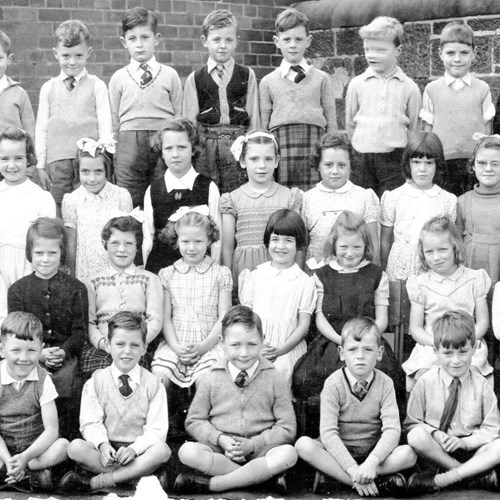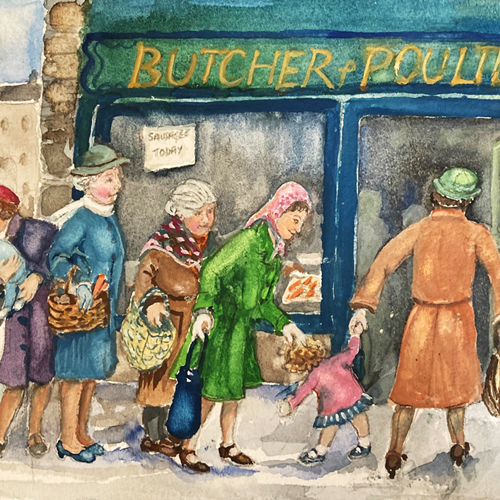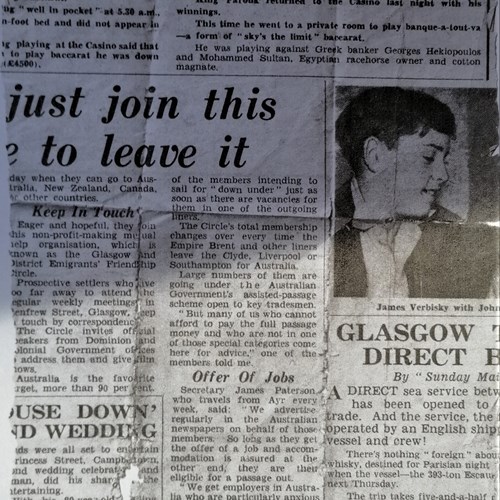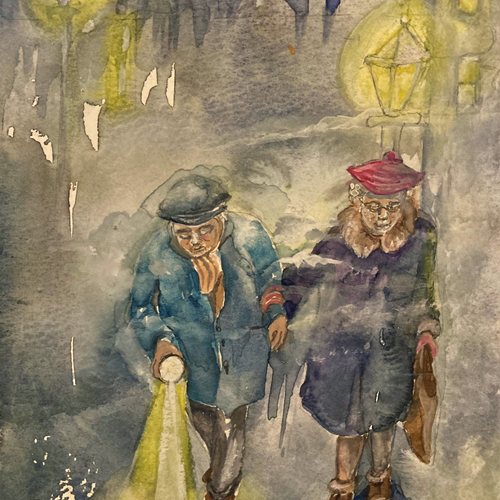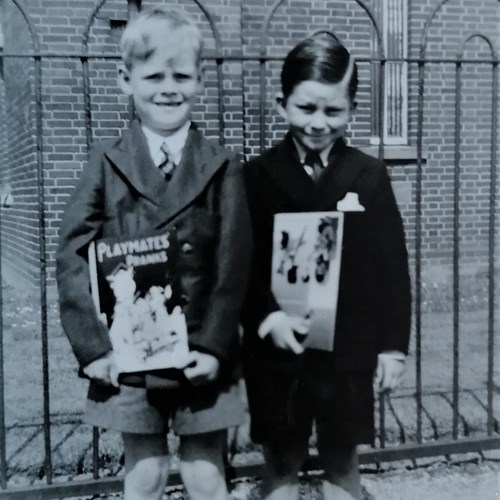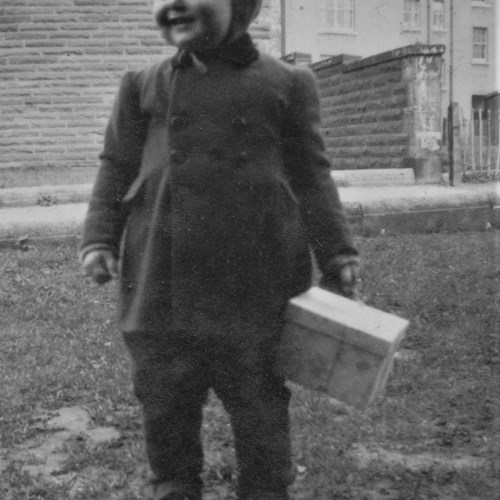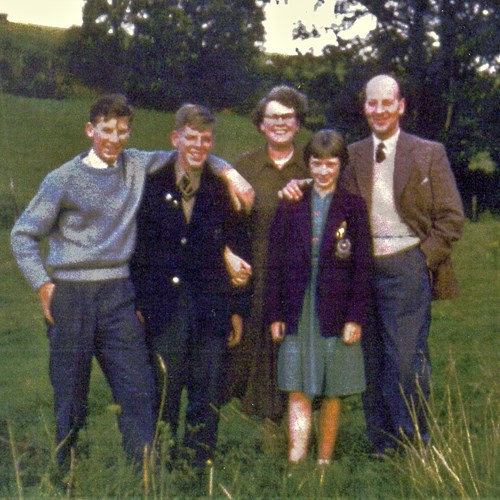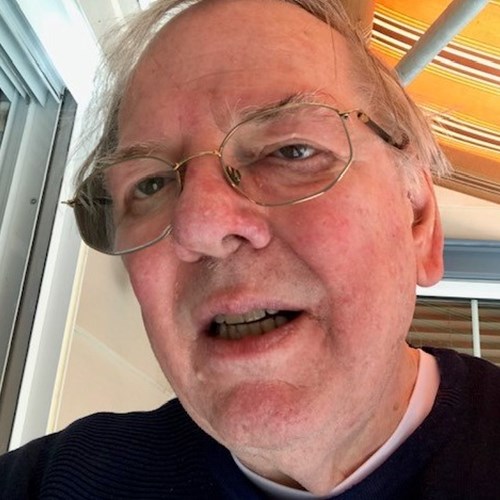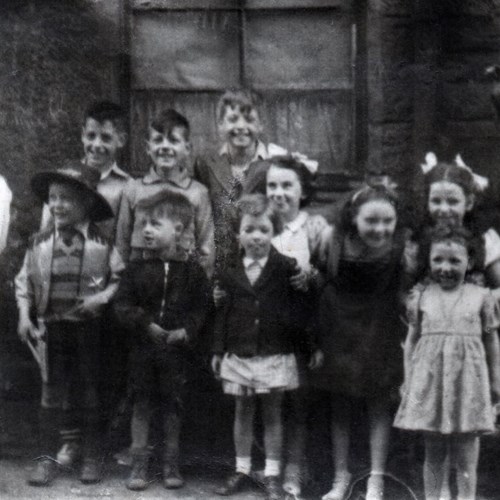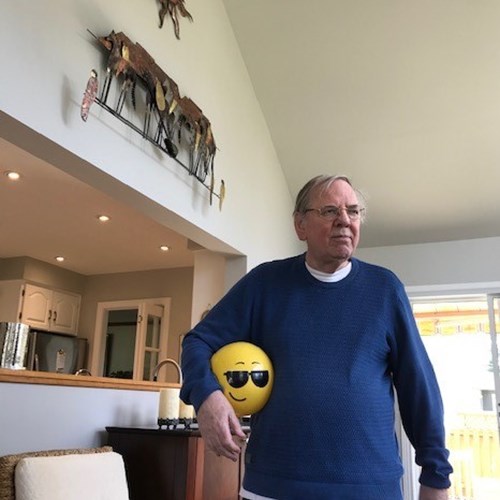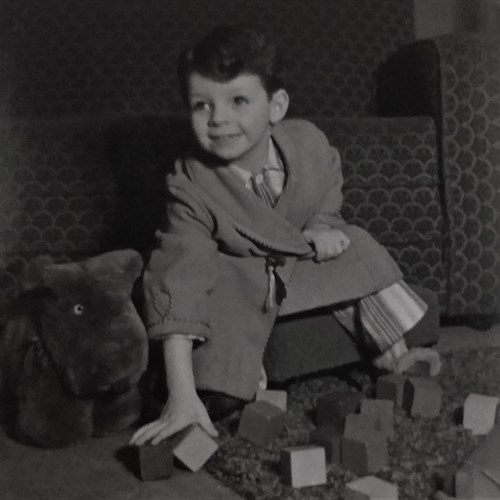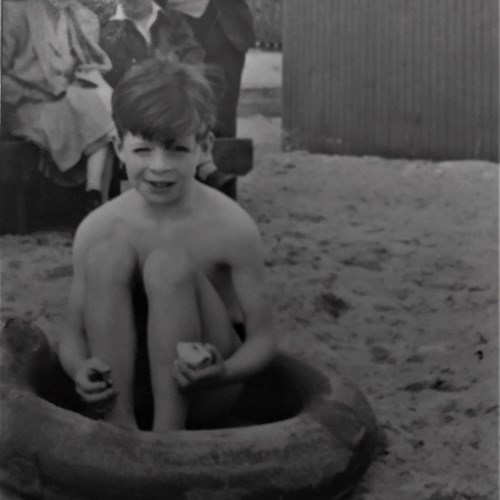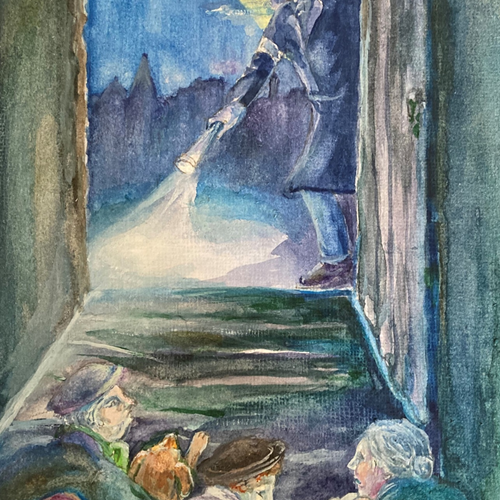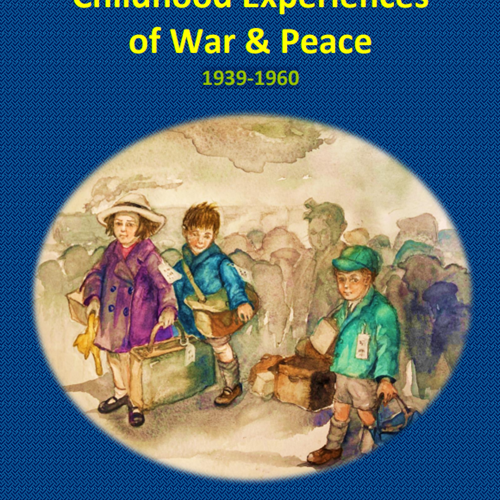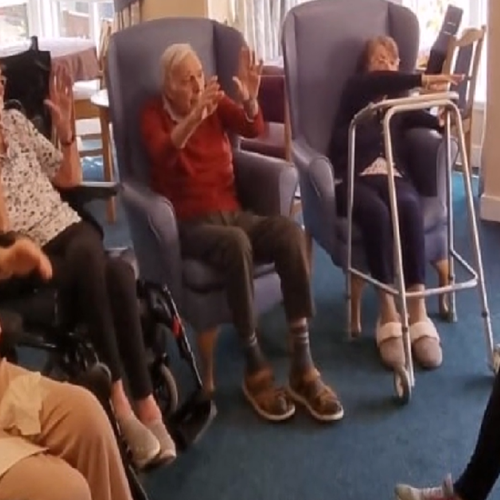The Second World War in Europe came to an at 02.41 on the 7th of May 1945 with the signing of the surrender document by the Chief of Staff of the German Forces High Command. Victory in Japan, and therefore the end of all hostilities in WWII, came on the 2nd of September 1945 with the formal surrender of the Japanese onboard the USS Missouri in Tokyo Bay. Worldwide, an estimated seventy-five to eight-five million people died during WWII. In Scotland around thirty-four thousand combatant deaths were suffered, and around six thousand civilians were killed during WWII. Countless others were injured or otherwise affected by the war. Many of the civilians who were killed in Scotland, perished in the Clydeside air-raids of 1941.
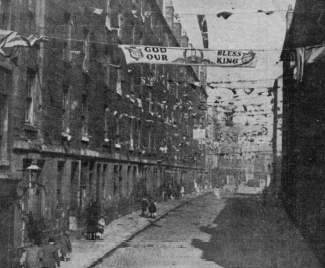
We have evidence that there were some people in Glasgow and the surrounding area, who saw no reason to celebrate on VE day, as they still had relatives fighting in the Far East. On both VE day and VJ day, the celebrations were marred for many by the loss of sons, daughters, mothers, fathers, brothers, sisters, aunts, uncles, cousins, and spouses. One man, who was a child at the time, remembered the tragic story of one of his neighbours, who had lost her husband within the last weeks of the war in Europe. The adults spoke in hushed tones about how she would not be coming out for VE Day as she was not in any fit state to celebrate.
Industry had been booming on the Clydeside with factories producing munitions and armaments for the war. The Clydeside shipyards alone made a massive contribution to the war effort. At the back of some people’s minds was the worry that these jobs would go with the coming of peace. Women may have feared losing their jobs to returning servicemen, as this had happened to their mothers after WWI. The employment situation, after all, had been poor in this area before the war. In the Glasgow shipyards, four hundred and ninety-three tons of ships were produced, compared with three hundred and twenty-two tons in the few years before the war. This may have put an edge on celebrations for some. Some children and teenagers would have picked up on these fears from their parents, and feared for their families and for their own futures.
Nonetheless, VE day was celebrated on the 8th of May 1945. Some people could not wait and started celebrating on the 7th of May 1945. Celebrations took place throughout the UK, with the largest ones being in the centre of London. Street parties sprung up everywhere. In Glasgow and the surrounding area street parties and official celebrations took place in all areas. There was a formal two-day holiday, with schools closing for the duration.
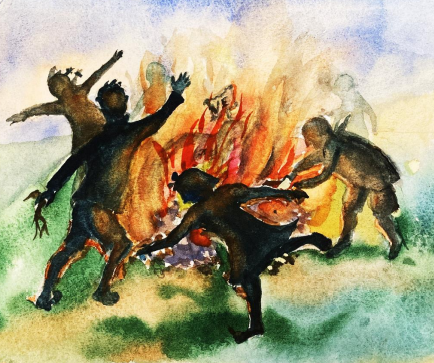
V.E. Day Bonfire’, by Joyce Kelly, Artist in Residence, Communities Past & Futures Society
In Glasgow it was said that there was a party in every street. There were no official bonfires, and other bonfires were discouraged, but many were lit nonetheless, and countless effigies of Hitler were tossed on them, accompanied by loud singing. Police attended seventy-five fires and arrests were made for the theft of firewood.
The Chief of Police and Glasgow Corporation gave conflicting advice on the putting up of bunting. The Chief was concerned that bunting might fall on the heads of horses and cause them to bolt, but the council encouraged its use. A lot of the Union Flag bunting that was used dated back to the coronation of King George VI, in 1937. Flags of other allied nations were also flown, and there was also bunting bedecked with Saltires.
The bells of Glasgow Cathedral and many other churches rang out across the city. In Glasgow and Greenock, ships sounded their foghorns, signalling the letter ‘V’ in morse code in celebration. In Greenock, most of the town turned out and were thanked by the Provost for the vital role the town’s industry played in the war effort. In Glasgow and Paisley, buildings such as the City Chambers, Glasgow University, and Paisley Cathedral were floodlit, which must, combined with many fairy lights, have been quite a spectacle for a nation used to six years of blackouts. Some children would never have witnessed so many lights. We know that more than one child of the time remembers VE day as a very colourful affair.
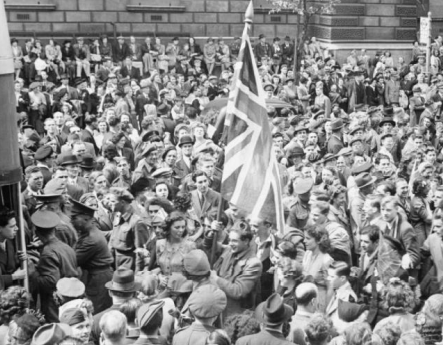
George Square saw a crowd of over one hundred thousand people. These were mainly women as a lot of factories and shipyards did not observe the holiday. There were also servicemen of many different nationalities, including a Dutch sailor who climbed atop the statue of the Duke of Wellington and thanked the people of Scotland for their contribution to liberating his country. Celebrations there went on until 1.30am, with other unofficial parties also carrying on into the wee small hours. There was reported to be very little in the way of drunkenness.
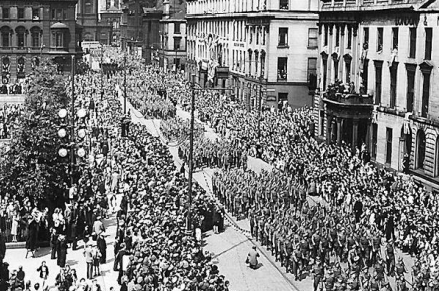
Victory in Japan day saw far more subdued celebrations in Glasgow and the surrounding area, but there was bonfires and celebrations. A shortage of bread put a dampener on the mood of some, as this reminded them that the privations of war were far from over.
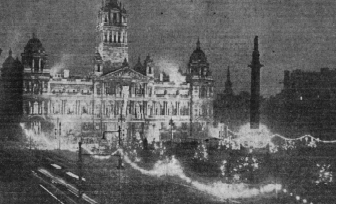
Childhood Memories
“The End of WWII”
On VE Day we went up to Bath Street and stood on the raised steps of some office to get a good view of what seemed to be an impromptu parade. There was great excitement much hugging and kissing (not me I was only 8). We never needed Social Security since my Father was working but I remember we got, during the War and after, a bottle of concentrated orange juice and a bottle of cod liver oil, these I was sent to collect at offices across from the West of Scotland Cricket Ground in Partick. We also got free milk at school in small bottles of about 1/3 of a pint although on some days you could get more than 1 bottle.
Jim Smart, born 1938, brought up in Glasgow and Milngavie
What I remember before V.E. Day they had what they called the Auxiliary Fire Service. And that was like wee grey trucks. And I think they had a fire pump on it and that. And you’d see them going up and down the road, going to fires and what have you. And I’ve got a faint recollection about Caledonia Road. It was bonfires out in the street. People celebrating V.E. Day. It’s a faint recollection as I was only five at the time.
Alf Duffy, born 1940, brought up in the Gorbals and Pollok
My eighteenth birthday was spent as a barman (counterhand) in the Seaforth Bar, in Gorbals… It was also Victory in Europe (V.E. Day) and everyone was celebrating the end of hostilities, except me. The last place one wants to be, during victory celebrations, is behind a pub bar. On the customer’s side of the bar. Great. But serving a mob whose thirst knows no limit, it is the pits. The pubs had to close at 9.30pm during the war and by the time the last customer had left the premises and we had cleared up, it was after 10pm.
I did not drink beer or spirits then, so getting drunk was out of the question. I walked to George Square, a ten-minute walk. It seemed that half the population of Glasgow were there, singing, dancing, and a lot of people drinking. It was a strange feeling for me observing the crowd but not being part of it. My pals were in the services and I had no desire to join in the fun on my own. It was my birthday but I had no desire to celebrate so I went home. I suppose I was dead tired after serving drinks all day. Serving in pub, or indeed a shop, is hard on the feet.
John Power, born 1927, brought up Saltmarket and Garngad, Glasgow. Courtesy of his daughter Dini Powe
I remember a big bonfire in Carfin Street. I wasn’t too concerned about it because I wasn’t allowed out because I was quite wee. And I wasn’t allowed out because of the bonfire. So, I had to watch from the window. I knew that was the end of the war or Victory in Europe.
M. McKinnon, born 1937, brought up Govanhill and Southside
VE Day. That I remember. My eldest brother Ellis who was always a bit of an electronic geek. He ended up being a bit of an inventor. And he was always into electrical things. His crystal sets and all that. And he got a board and with electric bulbs made the letters VE. And on our house…We’d an upstairs downstairs. A terraced house. And the lounge downstairs protruded. So, you could stand on the roof of it. And he had this board up there. All lit up. The VE. And I can remember that all the street…Well, that part of Tantallon Road were all out celebrating the end of the war in Europe.
Philip Cohen, born 1937, brought up in the Gorbals and then Shawlands
I remember being called in. My Mum coming to call me into the house because myself and some of my friends were dancing around the street shouting ‘We won the war, we won the war’. And she dragged me into the house and said, ‘Don’t do that’. So, I got into trouble for doing that.
We had a huge bonfire, well it seemed huge to me, at the back of our house in the field. And it had a large wooden swastika on the top. And I think some of the younger boys lit it before it was supposed to be lit. And my Dad rushing out with a bucket of water to put it out until it was dark. I remember that bonfire very well. Collecting wood for it, going around asking people if they had any old wood.
There wasn’t a street party. I just remember walking down to Dykehead Cross with my Mum and Dad and seeing the lights. And a lot of people gathered round there and hugging each other. It was a great occasion. That was just V.E. night.”
Grace Wilson Blair, born 1935, brought up in Shotts
They used to test the air raid sirens regularly. I think it was once a month and the sirens would go off, just to test them. I’ve got a vague memory of there being this corrugated iron thing in the back garden, obviously it disappeared along with all the rest of them, but I do have this Anderson shelter, round corrugated iron roof dug into the garden. I also remember my Father or my Mother telling me that one of the houses at the back of us had been destroyed. And you could see there was a slight difference in the house that replaced it from the ones that had been there before.
Graeme St Clair, born 1947, brought up in Knightswood and Springburn
I remember there was celebrations for V.E. Day. There were celebrations all over the village. Street parties and things like that. I particularly remember they had benefit concerts for men who had been prisoners of war. There were a few in the village who had been prisoners in German prison camps. I particularly remember one for a man who had been a prisoner in a Japanese prison camp. Because this poor man was sitting because it was for his benefit, and he was so thin and he was a kind of yellow colour. I can still see that to this day. Very jaundiced looking. We used to love these concerts and we knew all the songs.
The adults didn’t talk much about it, as far as I remember, but we did know what was going on. ‘Cause my father was a great cinema fan and I was his companion. So, you so all the newsreels. You saw all about the war on the newsreels. I particularly remember the newsreel of the end of the war. When they came across one of the concentration camps at Belsen. I remember seeing that on the newsreel. And being shocked at these people. They were so thin and their eyes were staring. I’ll never forget that.
Elma Robertson, born 1936, brought up Old Kilpatrick
I remember the actual V.E. Day and I wasn’t very enthusiastic about it. I didn’t fully understand what it was all about. And, in fact, on the evening I went to bed in the normal way, seven o’clock or whatever. And we went to bed at that time, and I was woken up by the noise and when I looked out our one and only bedroom window, the place was crowded with people, up and down the street. So I went and realised I was in the house alone, that my parents and my brothers and sisters had gone. So I went out looking for them. And there was a sort of a square opposite the house and there was a huge bonfire, absolutely huge. And the place was so crowded and everyone was, I suppose, were all drinking. I wouldn’t have noticed that at the time but I’m sure they were. It was certainly a happy occasion and this huge, big bonfire. But I never did find my parents not until later when we were back home. But I didn’t find them on that evening. So, I spent V.E. night literally on my own, wandering about looking for my parents in this lovely bright bonfire lit surroundings. So, I certainly do remember that.
David McNeice, born 1937, brought up in Greenock and Millport
Towards the end of the war when I was older and I was a Guide rather than a Brownie, we went camping regularly. I remember vividly when the war with Japan ended, we were in Guide camp, and I think because we were older the war impacted more. I remember V.E. day but I particularly remember that day at Guide camp when the leader of the camp came and told us that the war with Japan had ended.
We were on the train and Pitlochry Station somebody got on to the train and announced that Churchill had been defeated, lost the election. I remember the shock horror of the fact that the person who had lead the war, and was such a great man, was politically defeated. I remember my Father being ashen. Not that he was particularly political but just the fact that they could’ve kicked Churchill out. I remember that very well.
Helen Jean Millar, born 1931, brought up Pollokshield
There were air raid shelters. We used to climb up the back of the air raid shelter. And we used to jump from the air raid shelter on to the roof of the midden. And sometimes you couldn’t jump and you’d to dive and grab it with your fingers and then climb up. They were all bricked up but after a lot of time and effort with an old hammer we could open some of the bricks. And I used to think, how could folk go in there during the war, and they were that close to the tenement. And why were they so close to the tenements? What if the bomb actually missed the tenement and hit the air raid shelter? They were only about twenty feet away. And what if it hit the tenement and the tenement dropped on top of the shelter?
I remember a bomb site on what we called the old end of Maryhill towards Killermont or Bearsden. There was a couple of streets there got pelted.
Sandy Boyle born 1948 brought up Maryhill
Not so much in the Gorbals, but in Kinning Park there was lots (of bombed out buildings), because it was on the way to the docks and there was lots of things there. It seems such a short few years after the war but to me when my Mother talked about it, it was like the olden days and it had actually only been a few years.
Cecilia Murray, born 1942, brought up in Gorbals and Castlemilk
Gosport had a cinema called The Ritz. And it was bombed with an incendiary bomb. And was burned to the ground with the exception of the façade. And for years and years afterwards this was one of our famous places to play in the rubble behind this façade. The word Ritz R.I.T.Z. was in huge letters at the top of this façade and remained so until probably ‘47 or ’48. And eventually it was knocked down.
Ian Coombe, born 1942, brought up Gosport, then Glasgow
The street we were in, I was brought up in Florence Street. And the kind of major road at right angles to ours was called Caledonia Road and it was slightly wider. And in the middle of the road was air raid shelters. Because what the problem was like ,if we were wanting to go to shops on the other side of Caledonia Road, there was a passage way at the end beside the shelters. And I believe there was a few children knocked down. They would go in one side, through the passageway and out the other end and hit with a car. Again, here was hardly any traffic back then. But I remember my older brother saying a girl up the next close to us. That’s how she was killed. She had run through the passageway in the shelter and came out the other side. And a vehicle of sorts, whether it was a car or lorry I don’t know, that hit her. And across the street we were in, in the backcourt, there was a couple of air shelters in there. I can remember them. That was the only ones I can remember.
Another thing I do remember is what they called the Emergency Water Supply. A massive water tank that held thousands of gallons of water. The idea being any bombing that took place, you know, it would be there for the Fire Brigade. I remember them.
Alf Duffy, born 1940, brought up in the Gorbals and Pollok
There was a lot of kids in the neighbourhood and the boys they built a bonfire. There was this big area near where we lived it was called The Mill Dam and right in there was a huge, big fire. I don’t remember there being any adults there, but there was a lot of kids there. I remember my sisters and I going down to watch and it was blazing away. The older boys were having a lot of fun. I’m talking about mid-teens and all that stuff- they’re the ones who built it.
Rene Walters (nee Catherine McMenamin), born 1938, brought up in Dumbarton
At the bottom of 97 Otago Street like all these tenements they had a bomb shelter. And there was a baffle wall immediately outside the shelter. And this is where you came down to empty your bins. You came down through that and round the baffle wall to the bins. And in shelters-it was all a sort of a limestone on the walls and on the ceilings. And we used to get hold of candles and we would light the candles. And you would see ‘PMcN loves VH’ (Valerie Hall), things like that.” “You had to empty your bins twice a week down there. It was always a bit spooky. You’d go down and then it became darker as you went down into it.
Peter McNaughton, born 1944, brought up in Clapham, Glasgow and Comrie
We used to play on a rubbish dump just across the road from the flats where we lived and we used the soot that chimney sweeps dumped there. We used that as face paint, I can remember that very clearly, and we played in air raid shelters. There was an underground one and two overground ones. We played kingball on the top of the overground ones. And we lit fires, forbidden fires, in the underground one and once nearly kippered our friend. Because two of us stood outside with our legs against the opening to stop the smoke coming out because we could see our mothers looking out the window, and there was still a friend inside tending the fire and she came out, quite red faced, gasping for air. So we nearly killed her.
Christine McIntosh, born 1945, brought up Hyndland, Broomhill and Arran
I remember there was celebrations and things like that.
They put music on and the older ones were all dancing, I remember that. My older sisters went to George Square, and they were all dancing and singing and them coming back and saying oh it was great, you weren’t dancing with anybody special, you were just dancing about and photographs being taken. We were getting the Times to see if they were in it, but they weren’t in it, them and their pals.
Cabreg, born 1935, brought up in London Road, Glasgow, and Pollok
We were still making models of spitfires. There were still air raid shelters in the back yard and there were still vacant lots where bombs had taken out buildings and it was like that for a long time… The one that I remember (air raid shelter) most was in Anniesland. Each of the blocks had like a brick structure behind it and there was one behind each block. So I think they were communal for people in that part of the block. I don’t know if they went underground because I never got inside one. I just saw the outside but they looked just like brick boxes and they were in the back yards and they were there for a long time after war. Eventually they took them away.
Murdo Morrison, born 1950, brought in up Scotstoun and Drumchapel
